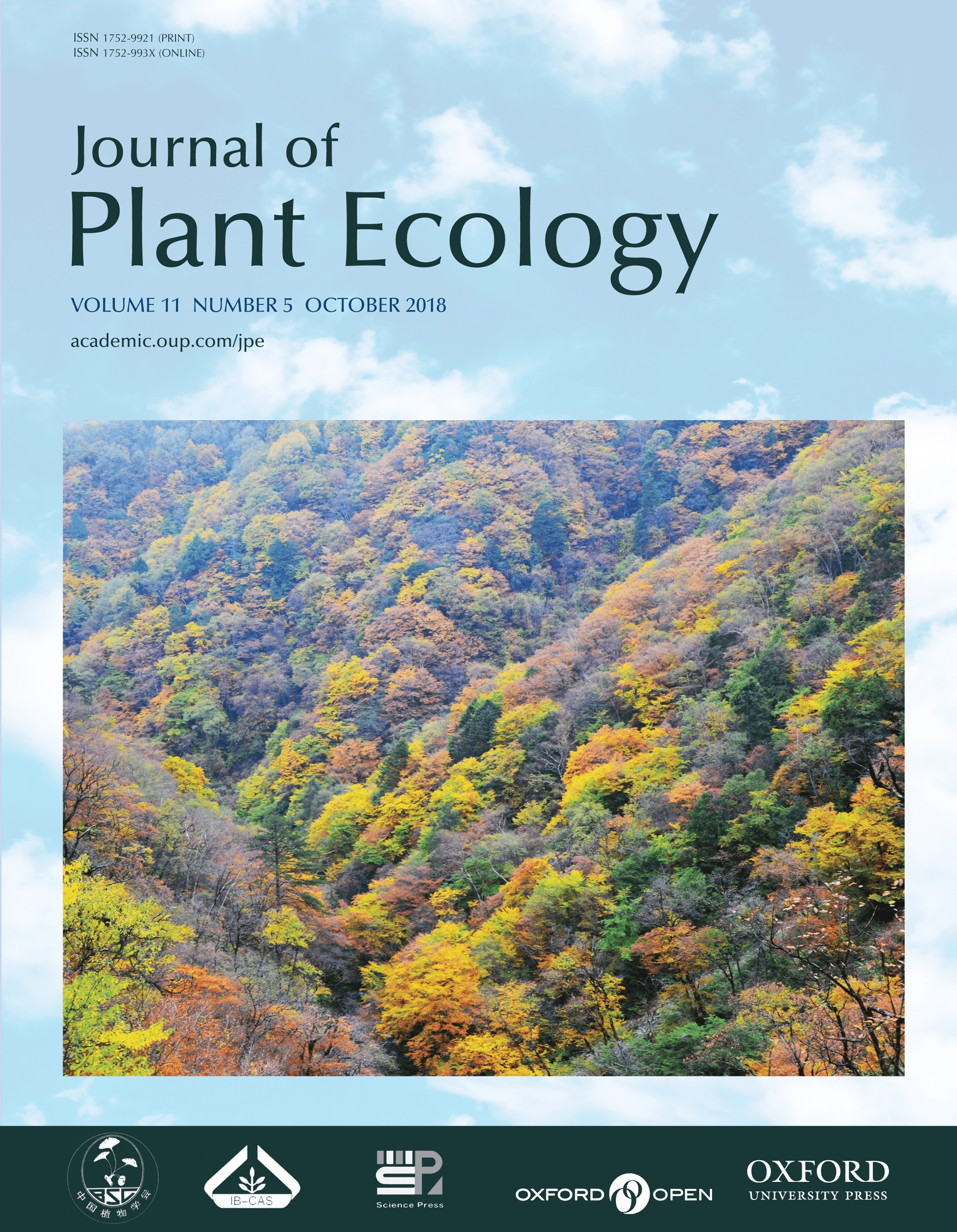Aims
Exploring species-genetic diversity correlation (SGDC) is essential for understanding spatial patterns of diversity and the underlying mechanisms. Until now, latitudinal patterns of species diversity (SD) and genetic diversity (GD) were rarely studied simultaneously. As the freezing-tolerance hypothesis predicts a decrease of SD from low to high latitudes and the central-marginal hypothesis predicts a unimodal pattern of GD along latitude, we hypothesized that SD and GD are uncorrelated. We also tested how climatic and edaphic factors affect the correlation between the two levels of biodiversity.
Methods
We measured (i) SD (species richness and Simpson’s diversity index) and community dissimilarity of woody plants (63 plots), (ii) GD (allelic richness and expected heterozygosity) and genetic differentiation of a dominant tree species (Euptelea pleiospermum; 678 individuals from 21 populations) using nuclear microsatellite data, and (iii) climatic (annual mean precipitation, annual mean temperature, minimum temperature, maximum temperature, annual relative moisture, solar radiation, photosynthetically active radiation) and edaphic (total C, total N, total P, available P, K, Ca, Mg, Al, Fe, Mn, Ni, Zn, B, Mo, Cu, pH) variables of 21 sites. We conducted both linear and quadratic regression analyses of diversity parameters against latitude. Relationships between SD and GD were tested using Pearson’s correlation. Pearson’s and Spearman’s ρ correlation coefficients were calculated between diversity parameters and environmental variables. We used stepwise multiple regression analysis to identify the significant environmental predictors of SD and GD.
Important Findings
We observed no significant correlation between measures of SD and GD. SD decreases with increasing latitude, which can be partly explained by the freezing-tolerance hypothesis, whereas GD presents a unimodal pattern along the latitudinal gradient, which is consistent with the prediction of the central-marginal hypothesis. The contrasting latitudinal patterns of SD and GD indicate that the two levels of biodiversity do not co-vary in space. Based on both correlation analysis and stepwise multiple regression analysis, SD is only related to climatic variables, whereas GD is mainly related to edaphic variables. Our results show that different geographical and environmental factors affect SD and GD, driving the non-significant correlation between the two fundamental levels of biodiversity. Furthermore, a significantly positive correlation was observed between genetic distance and community dissimilarity, both of which were significantly correlated with geographical distance.








